A Guide to the UK’s 5 Most Common Owl Species
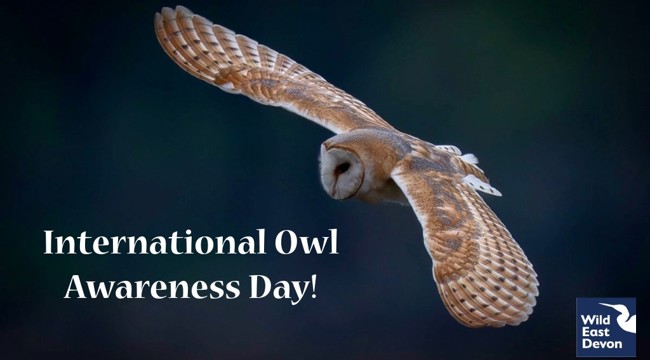
In honour of International Owl Awareness Day, we’ve put together a handy guide to help you identify the five main species of owls you’re most likely to see right here in the UK. Whether you’re exploring the countryside at dusk or simply listening out in your local woodland, these mysterious and majestic birds are always a treat to encounter.
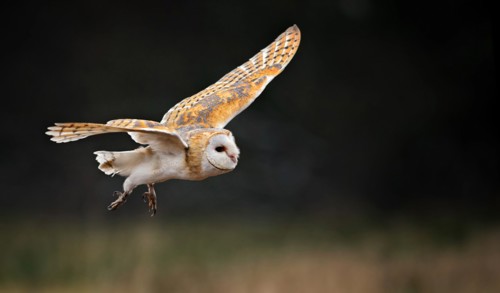
1. Barn Owl
Tyto alba
Arguably the UK’s most iconic owl, the barn owl is unmistakable. With its ghostly white underparts and golden-brown upperparts flecked with grey, it almost glows in the half-light of dawn or dusk. Its heart-shaped white face and dark eyes give it a hauntingly beautiful appearance, and no other UK owl looks quite like it.
You’ll often spot barn owls gliding silently over grasslands and farmland, hunting for small mammals. Their flight is smooth and silent, and they’re most active around dawn and dusk but don’t be surprised if you catch a glimpse during the day.
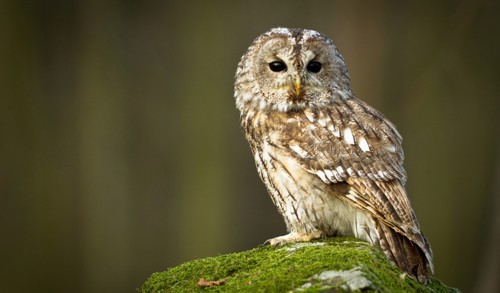
2. Tawny Owl
Strix aluco
The tawny owl is a woodland resident with a rounded head and a compact build. Slightly larger than the barn owl, its plumage can range from greyish to reddish-brown, and its dark eyes sit within a plain, rounded facial disk.
Most active at night, tawny owls are rarely seen during the day. They prefer to hunt from perches, swooping down to grab their prey from the woodland floor. In flight, they show off broad wings and a direct, purposeful flight style, usually just short glides from one tree to another.
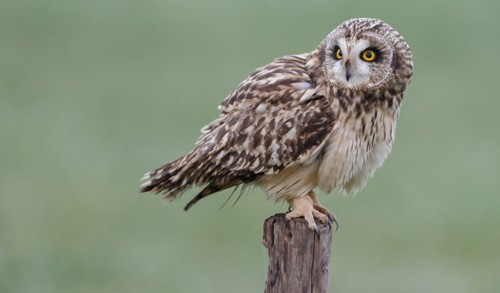
3. Short-eared Owl
Asio flammeus
The short-eared owl is a striking and more open-country owl, often found on moorlands, marshes, and grasslands, especially in winter when birds migrate in from Europe. It’s sandy-brown with streaked underparts and a bold facial expression thanks to dark patches around its bright yellow eyes, like dramatic black eyeshadow.
While it has short "ear tufts," they’re usually barely visible. In flight, it shows long, narrow wings with distinct black wingtips, as though dipped in ink. Unusually for an owl, the short-eared owl often hunts during daylight, especially in the late afternoon.
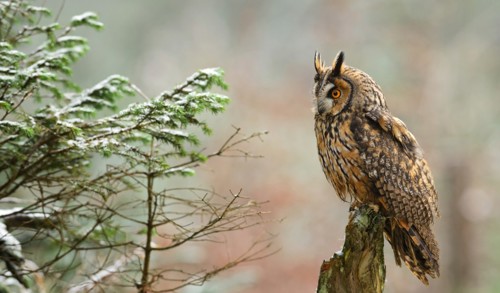
4. Long-eared Owl
Asio otus
Very similar in size and shape to the short-eared owl, the long-eared owl is a bit darker and more secretive. It sports long, prominent "ear tufts" that give it a distinctive silhouette. Its facial disk is buff-coloured, framed with a neat black outline and expressive white "eyebrows."
Though harder to spot, especially during the day, long-eared owls are sometimes seen hunting in daylight hours. In flight, they can be tricky to distinguish from short-eared owls, but look for shorter, more rounded wings and finer barring on the tail. In winter, they gather in communal roosts, often hidden in dense trees. So any sighting should be observed quietly and from a respectful distance.
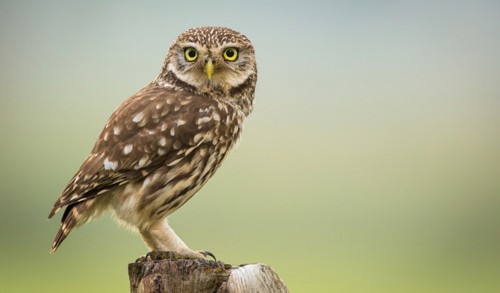
5. Little Owl
Athene noctua
The little owl lives up to its name - small, stocky, and often found in open countryside, perched on fence posts or low branches. Its flat head and fierce yellow eyes, framed by pale ‘eyebrows,’ give it a grumpy, almost comical expression.
Its upperparts are dark brown with pale spots, and its underparts are boldly streaked. In flight, it moves quickly with a bounding motion similar to a thrush. You might also spot it running along the ground in pursuit of insects and other prey. Little owls are most active at dawn and dusk but can be seen throughout the day.
Final Thoughts
Owls are some of the most charismatic and mysterious birds in the UK. From the ghostly barn owl floating over a field to the fierce little owl glaring from a fence post, each species has its own charm and story. So next time you’re out walking at twilight or exploring your local nature reserve, keep your eyes and ears open, you never know what might be watching from the shadows.
Happy Owl Awareness Day! 🦉
